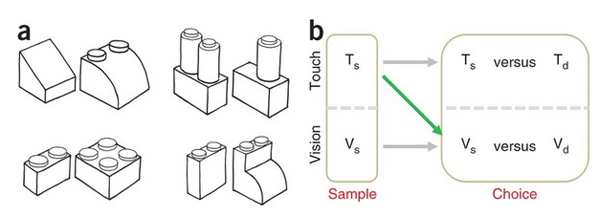I missed this paper in the chaos and runup to ARVO, but its conclusions are remarkably compelling. Imagine that you were blind for years, perhaps from birth and suddenly, you were able to see with perfect clarity. Would you be able to recognize items like a pyramid, a box or a sphere by sight when you only knew these objects previously by touch?
It turns out that this is a very old question and the implications for curing blindness are substantial. There are a number of research teams (ours included) that are aggressively going after a “cure” for blindness. The crux of the question is: What commonality is shared between the senses and when one conceptualizes say, a shape, is that concept accessible to other senses? John Locke maintained that all associations between the senses could only be learned through experience and that one could not Jump from one concept to another without first experiencing them.
These questions have been examined experimentally to some extent as far back as the mid 1700’s Yes, amazingly they were doing cataract surgeries back then and even earlier (6th century BCE). However, these studies were flawed in that they did not take into account visual acuity, nor were the studies done in a timely fashion post-surgery.
So, Richard Held, Yuri Ostrovsky, Beatrice de Gelder, Tapan Gandhi, Suma Ganesh, Umang Mathur and Pawan Sinha set out to test a group of individuals who were profoundly blind from birth from corneal and lens defects allowing only the perception of light. After their surgeries to correct the vision, acuity measured nominally 20/160 which is sufficient to see objects and live independent lives. Each individual was tested within two days of the operation where they could see a set of objects, but not touch them. The subjects then felt identical shapes under a covered table and were told to match them up with what they could see… It turns out Locke was absolutely correct. Objects felt, could not be matched with seen objects, but the *really important* feature is that they rapidly improved with continued testing which makes a very compelling case for plasticity and learning across modalities. Individuals who will experience therapies that rescue vision have enough plasticity in their visual cortex to learn to “see” again.
